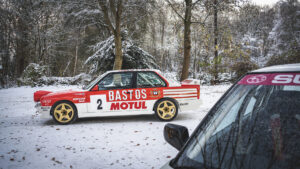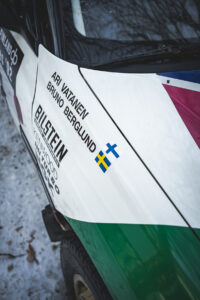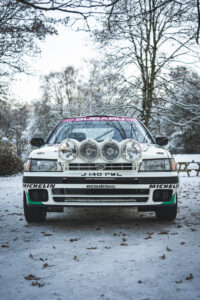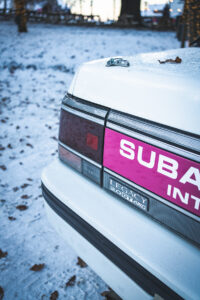Group A rallying was long seen as the poor relation to Group B. Is it finally having its moment in the sun as people rediscover the category’s variety and intrigue?
Nostalgia’s a funny thing. When Group A replaced Group B as the top category of international rallying for the 1987 season, a lot of people were disappointed. The cars were slower, less dramatic, and far more closely related to everyday machinery than the mid-engined exotica that had defined the top level of Group B competition. That brief five-year burst of noise, colour, and danger has come to be looked at with a mixture of reverence for its raw drama and sombre reflection on the tragedies it caused. It remains, for many, rallying’s golden age.
What followed was an era largely dominated by the Lancia Delta Integrale and Toyota Celica GT-Four – a sort of lost few years for rallying before the Mitsubishi-Subaru rivalry came to define the sport.
Beneath the surface, though, Group A was an instantly competitive, fascinating category, packed full of variety. There were front-, rear-, and four-wheel drive cars; hatchbacks, saloons, coupés, all duking it out for supremacy on the world’s stages.
This pair of cars, both fielded in period by Prodrive and still owned by them today, are excellent demonstrations of this. There’s a Subaru, but not the one you most readily associate with rallying. Before the era-defining Impreza debuted midway through the 1993 season, the Prodrive-run Subaru Rally Team fielded this, the bigger Legacy. The basic recipe is familiar – 2.0-litre turbocharged flat-four, four-wheel drive, and limited-slip diffs on both ends to help get the roughly 300hp down on any surface.
It was on the Group A Legacy’s final outing, New Zealand 1993, that both Colin McRae and the Subaru World Rally Team would clinch their first WRC rally victories, kickstarting that iconic pairing’s successes for the rest of the 1990s. This car, meanwhile, is the one taken to fourth on the 1992 1000 Lakes Rally by legendary Finn Ari Vatanen.
Then there’s the BMW. Think of the E30 M3’s motorsport exploits, and you’ll most likely think of it door-banging with Sierra Cosworths in the BTCC or Mercedes 190Es in the DTM. But that combination of compact, balanced rear-drive chassis and revvy four-cylinder engine also made it a handy rally car. It was particularly formidable on tarmac where its four-wheel-drive rivals’ advantage was lessened – BMW and Prodrive would take it to victory on the 1987 Tour de Corse and 1988 Manx Rally.
There’s some incredible footage online of this latter event, Patrick Snijers furiously ragging the Bastos-Motul liveried E30 around the narrow lanes of the Isle of Man, fully committed to hanging the tail out in the way that only rally drivers can. This is the sister car, fielded in period by Frenchman Francois Chatriot.
What both of these cars represent are the gems and the curiosities that cropped up in those post-Group B years of rallying. Dig beyond the most famous cars of the ’90s and there are all kinds of intriguing entries that have faded into obscurity – Nissan 200SXs, Toyota Supras, Audi 200s, Opel Calibras, and more. The broader regulations encouraged experimentation and creativity amongst manufacturers, seeing what would stick where. Though the smaller four-wheel-drive cars would come to dominate, there was still a willingness to try different things, as ably demonstrated by Prodrive’s pair. Though neither achieved the level of success that some more famous cars would, they’re still interesting, integral parts of rallying’s historical canon, and we think that’s worth celebrating.


















































